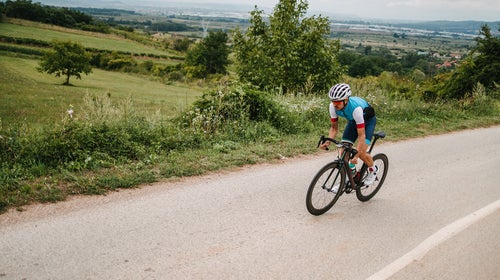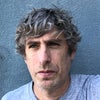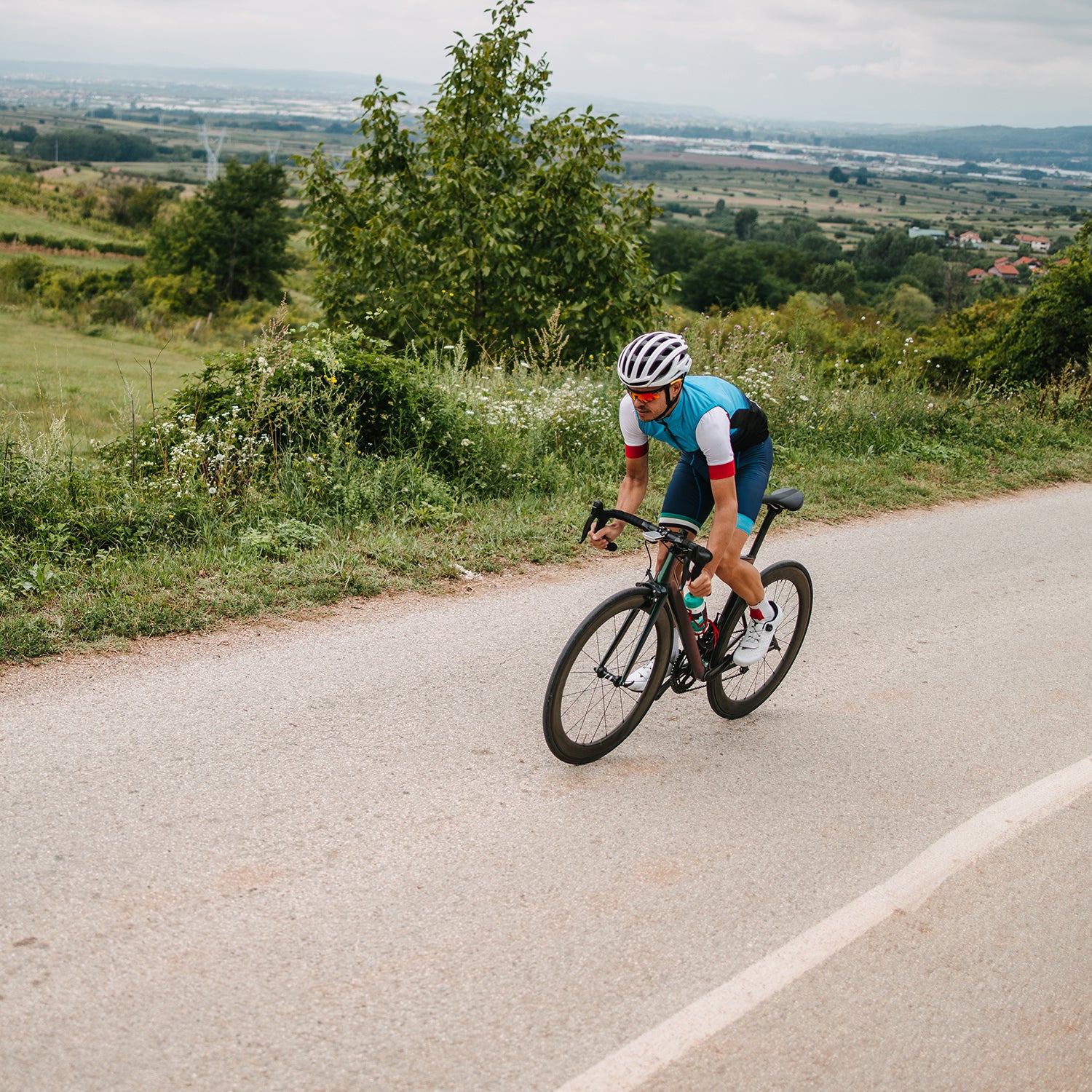They say love can be everlasting, but this little saga began with my wife impatiently imploring me to get more life insurance. After spending the first two years of the pandemic off the bike—for reasons I’ll explain soon—I had begun to ride a bit around Los Angeles, a city with limitless sunshine, spectacular canyon roads, and the most cycling fatalities in America. I can’t blame my wife for wanting a safety net in case the worst-case scenario happened.
That’s why a nurse came to my backyard this past January, rolling a suitcase packed with diagnostic equipment—to give me my first physical in at least four years. And that’s how I would discover that my cholesterol, for the first time in my life, had entered the danger zone. I’d always had low cholesterol. But now, the blood samples would soon reveal, I had hyperlipidemia, which basically means too much cholesterol and other fats in the blood.
The diagnostic company sent me an email with a big color-wheel infographic that displayed nearly all my results as green (good), but my lipid data as a very loud orange (not good). My total cholesterol was 255 and my LDL—the bad cholesterol—had soared all the way up to 184. Neither of these numbers is close to where it should be (roughly under 200 and 100, respectively). To add insult to injury, the insurance company then jacked up the already annoyingly high premium it had originally quoted me. I felt quantifiably less confident in my ability to stay alive.
Still, if I’m being honest, I already knew that my health had gone more than a little sideways. Two years in, the pandemic had fundamentally altered my routine at a point in my life—I’m in my fifties now—when I suppose I can no longer misbehave without consequences. For six years preceding the pandemic, I had commuted to work on a bicycle, pedaling between 140 to 160 miles each workweek without fail. Those tens of thousands of miles of steady riding had become the backbone of my healthy lifestyle, a daily adventure that kept my mind and body in a good place.
But then that damned virus came, and my commute dissolved into a 15-second walk to the home office in my garage. And for reasons that still are hard for me to understand or explain, I just stopped riding. I had pedaled roughly 50,000 miles in six years, but I simply quit cold turkey. I guess I felt that the bike life I had built, one that had given me a potent identity as a rider, had been taken away. It no longer seemed authentic for recreational workouts to center my riding life, and rather than wrestle with that problem, I let my road bike get dusty in a corner of the garage.
I hardly just sat on my ass—I went through a jogging phase, got disciplined about lifting weights, and eventually went deep on a walking and hiking binge that culminated in a one-day climb up Mount Whitney. And while in some ways my eating became more mindful—in my new WFH reality, I had more time to go to farmers’ markets and cook multicourse meals—my diet undoubtedly veered into comfort-food territory. The whole family was crammed into our small SoCal beach cottage. Everyone was trying to get through their Zooms and stave off ennui with streaming content, and I suppose I took refuge in thoughtfully composed cream sauces and grilled prawns and hundreds of perfect egg breakfasts.
So even before that friendly nurse unpacked her medical scale and the phlebotomy kit and the sphygmomanometer, I knew something wasn’t right. I had tacked on 20 pounds, partially kidding myself that much of it was solid muscle from all my lifting. More than that, I just didn’t feel great. My heart rate always felt a little higher and more labored than it should have. I wasn’t sleeping well. And without bike commuting to center my lifestyle, I felt a little lost.
It was peculiar, because I was keenly aware that American culture was seeing its greatest bike-riding renaissance in decades, as folks discovered or rediscovered cycling as sport, transport, and family fun. But I had gotten so deep into my transit riding that I struggled to get excited about throwing on spandex for a leisure workout without clear utility or a real destination. I genuinely felt that that part of my life—all the decades I’d spent on a road bike exploring and chasing fitness as a sort of deeply meaningful hobby—might be over.
A visit to my general practitioner changed that. The blood work from the insurance company was no joke, and I knew I had to take action. Fortunately, all this came at a time—April 2022—when my office reopened and my employer began not-so-gently encouraging staffers to come back at least a couple of days a week. As a result, I had already started riding my road bike again. I’d lost enough ground that it took me a few weeks to simply noodle the flattish 28-mile round trip without feeling as if I’d just survived an all-day fondo in the Dolomites. It was humbling to see that, despite all the exercise I’d done during the pandemic, I was in the worst biking shape I’d been in for decades.
Anyway, I was maybe six weeks into my tragicomic rebound when I finally got to see my general practitioner, and a new round of blood work brought unsurprisingly mediocre news: my cholesterol was lower, but not low enough.
No doubt lifestyle changes and little steps in the right direction should be celebrated, but I knew that losing a few pounds and cutting my cholesterol to 236 and my LDL to 172 was not going to hack it. In our follow-up consultation, my doctor shared a cool algorithm projecting that my ten-year risk of a “cardiac event” was 5.6 percent, and she recommended that I immediately start taking a statin drug to lower my lipids. When I asked her whether this would be temporary, she shook her head. Most likely, she said, it would be for life.
The riding turned out to be tougher than the diet. I’ve been in love with bikes for 35-plus years, but getting back in the saddle after a prolonged lapse was disheartening. I was as slow and clunky on the bike as I’d ever been.
I’m not qualified to make authoritative generalizations about the male psyche, but I had an unexpected reaction to this news. When I had gone through the life-insurance application process, I felt seriously irked about all the invasive questionnaires the company emailed me, showing that they had records of every medication I’d ever been prescribed and every minor and major medical incident in my life. For example, there was the time I knew I had acid reflux but let the urgent-care center give me an EKG just to be sure, and now that test was in my file for life. I was possibly more preoccupied with this dystopian annoyance than wrestling with a 5.6 percent chance of a heart attack or stroke, but in any case I was determined to avoid a permanent digital record of statin use if I could do something about it.
To that end, I asked my doctor if I could buy a little time to take more extreme action—to seriously ramp up my fitness and get my nutritional act together. She paused for a moment and looked up at the ceiling. I knew she thought my cholesterol was nothing to dither about, and I’ll bet she knows how many middle-aged men say they’re going to change their ways and then slide toward stagnation.
But in the end she told me I could give it a go for four months and then come back for new blood work and a recheck. I walked out of her office elated and pretty damn nervous—because I knew I’d have to totally reshape how I’d been taking care of myself for a while.
I went to work. I’ve been conceiving, writing, and packaging service journalism for 25 years, so I immediately started structuring a plan—something with clear rules and realistic ambition. (Over the years, I’ve edited health- and medicine-related magazines and worked on a few features about statin drugs, so I thought I knew enough to devise a basic plan without expert assistance.) The fitness part was pretty simple: ride at least ten hours a week. And keep lifting at least twice a week. As you can see, I like big, round numbers.
The food part would take me into less familiar territory. I wrote a list of things I would stop eating altogether—beef, fatty pork, butter, cream (thus ending 25 glorious years of coffee with half-and-half), shrimp, and fried foods. I’d nearly eliminate eggs and restrict myself to brown rice and whole-wheat pasta and bread, instead of semolina noodles, sourdough baguettes, and so forth. I swore off cheese unless it was on a salad or an occasional veggie or turkey burger. I’d switch from real milk to oat and almond substitutes. And no more impulse-purchase surprises from Trader Joe’s that contain a lot of saturated fat. (I’m not going to lie; swearing off the Cacio e Pepe Ravioli hurt my soul.) It was weird and galvanizing how quickly all these rules came into focus, and how steadfastly I stuck to them. I still don’t love drinking black coffee every day, but it’s hardly a struggle.
Oddly enough, the riding turned out to be tougher than the diet. I’ve been in love with bikes for 35-plus years, but getting back in the saddle after a prolonged lapse was disheartening. I was as slow and clunky on the bike as I’d ever been. Nearly all my cycling apparel—I have a lot—didn’t fit, and after an hourlong tootle, my ass hurt like a newbie’s. At first I was bike commuting to the office only a couple times a week, so I had to get the rest of my hours on solo recreational rides. Where I live, that means going up and down legit hills, and at first it was pathetic. I’ve been riding enough to know that nearly anyone can grind up any hill if they’re willing to go slow enough, but suddenly I was the guy everyone was blowing past. I haven’t measured myself in competitive terms in years, but I couldn’t help but think about what my former self could do. Current Me was getting his butt kicked.
But one of the great things about being out of shape and then returning to something your body has done for tens of thousands of hours is that improvement comes quickly and builds on itself. After four months of steady effort, my fitness has radically changed for the better. I can go out and ride three or four hours on hilly terrain without drama. I feel completely comfortable on the bike—my pedal stroke has returned, and I mostly feel rejuvenated by my daily commute. While I still can’t squeeze into some of my favorite jerseys, and I lack the fitness to jump on a fast group ride, there’s no doubt that the joy of riding is back.
Still, I wasn’t ready to celebrate my comeback until I went back to the doctor. I did that in mid-August. Since the day of my backyard physical for the insurance vultures, I lost about 20 pounds. In that time frame, my cholesterol dropped from 255 to 197, while my LDL fell from 184 to 129. (If you’re wondering, the doctor offered no congratulations—tough love, I guess. But she did tell me to come back for a recheck in six months.) I did this without taking medication—I simply rode my bike a lot and ate better. I feel better all around. I’m sleeping well and the sluggish, labored feeling I had is gone. For now, I’m on a path where a statin doesn’t seem necessary; with continued effort, I plan to get my lipid numbers even lower. Who knows what will happen in the future, but for now I feel happy that I could change my cardiac health simply by doing something I love, and by eating more carefully.
On a recent Sunday afternoon, I went for a long ride in Palos Verdes, a peninsula in southern L.A. County with big hills and bigger ocean views. It was a pretty toasty summer day, and I did two climbs that each took about 30 minutes. There were quiet, sustained stretches where I could really settle into the effort—hearing the depth of each exhalation and feeling each thump of my heart. The feeling of that discomfort gave me strength. It was the feeling of being alive.


